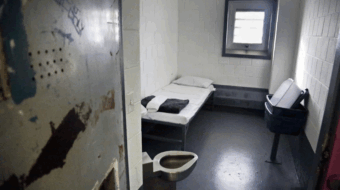Although the wage gap between white and African-American workers remains wide, it has been shrinking.
But that’s not so for the more significant black and white wealth gap.
A new study by researchers at Brandeis University shows that the wealth gap has been growing steadily, leaving African-American families with increasingly fewer resources than white families to cope with serious economic problems such as many families face today.
The Brandeis study found that in the quarter-century from 1984 to 2007, the African-American and white wealth gap more than quadrupled, from $20,000 to $95,000.
Middle-income white households had $74,000 in financial assets by 2007. That was far higher than even the average high income African-American family, which had only $18,000 in assets. At least 25 percent of the black families had no assets at all – no wealth, that is.
The study notes that wealth – “what you own minus what you owe” – is what “allows people to start a business, buy a home, send children to college, and ensure an economically secure retirement. Without wealth, families and communities cannot become and remain economically secure . . . The gap is opportunity denied and assures racial inequality for the next generation.”
The main reasons cited by the researchers for the four-fold increase in the African-American and white wealth gap are unfortunately not surprising: Racial discrimination and tax policies that favor the rich, who are disproportionately white.
The study noted the advantages given the wealthy through tax cuts on investment income and inheritances, retirement accounts, home mortgages and college savings. In contrast, African-American families typically face disadvantages – the disadvantages of “persistent discrimination.”
For example: During the period beginning in 1984, African Americans “were at least twice as likely to receive high cost home mortgages as whites with similar incomes. These high-cost loans unnecessarily impeded wealth building in minority communities and triggered the foreclosure crisis that is wiping out the largest source of wealth for minorities.”
Lacking sufficient assets, African Americans in general have had no choice but to rely heavily on expensive credit. The total amount of their debt just about doubled between 1984 and 2007 to at least $3,600 each.
To make it worse, African Americans, like other non-white credit users, generally have to pay more than white borrowers in interest payments and other charges. Many have no choice but to borrow from predatory lenders who charge exorbitant interest rates.
The study suggests several remedies, including creation of a Consumer Financial Protection Agency designed to ensure fairness for all in their financial dealings. That would include helping “equalize and regularize the terms on which cash-strapped families are borrowing to make ends meet.”
Efforts to help low and moderate income families increase their assets so as to gain economic stability and mobility have been increasing. But the study shows the efforts must be intensified, for they are “not yet strong enough or at a scale to make a significant difference in people’s lives.”
The study shows as well that the wealth gap between African Americans and whites persists even among African Americans who hold well-paying jobs.
Thus “wealth opportunities must be targeted to families of color whose lives are made even more precarious by not having enough assets to make ends meet when economic challenges arise.”
True enough, there are public policies now in place “that provide incentives and subsidies for asset building.” But reforms are needed to make certain that the policies benefit all Americans equally – reforms that might at last close the wealth gap between African-American and white workers and their families.
The Brandeis study has it right: “Public policies have played and continue to play a major role in creating and sustaining the racial wealth gap, and they must play a major role in closing it.”









